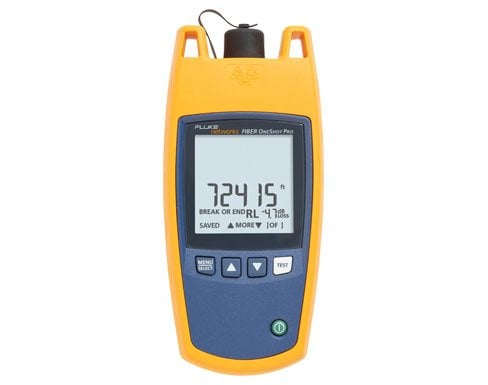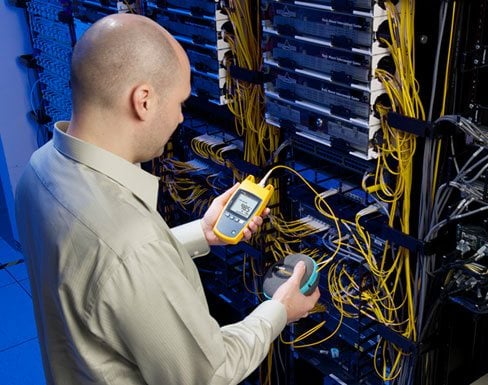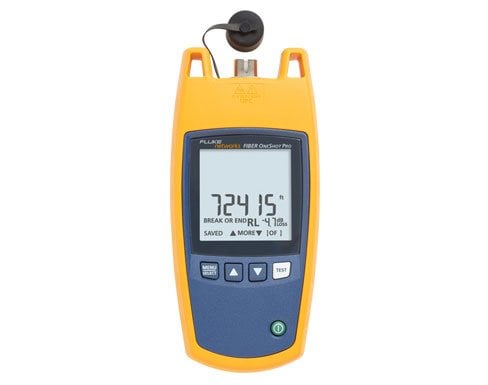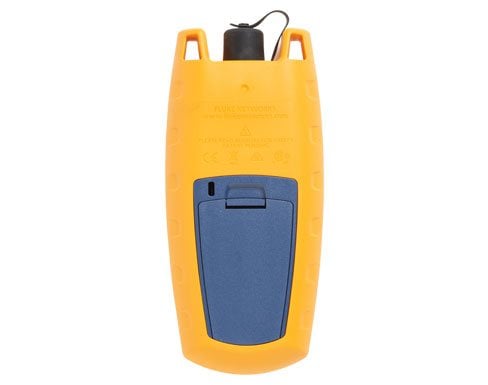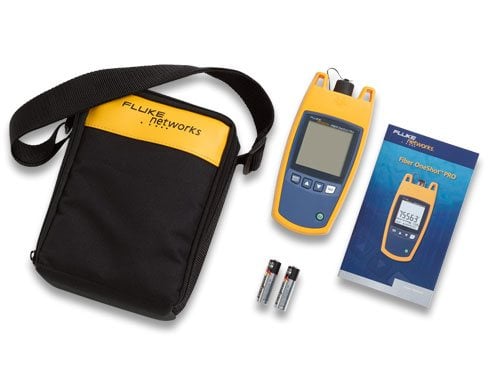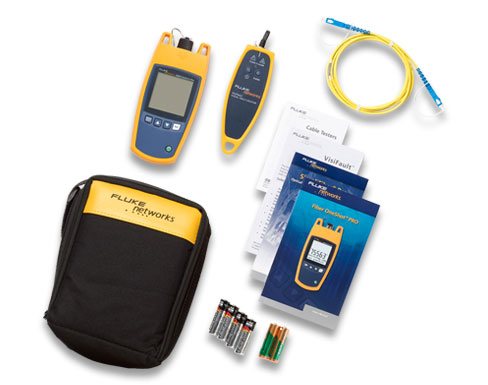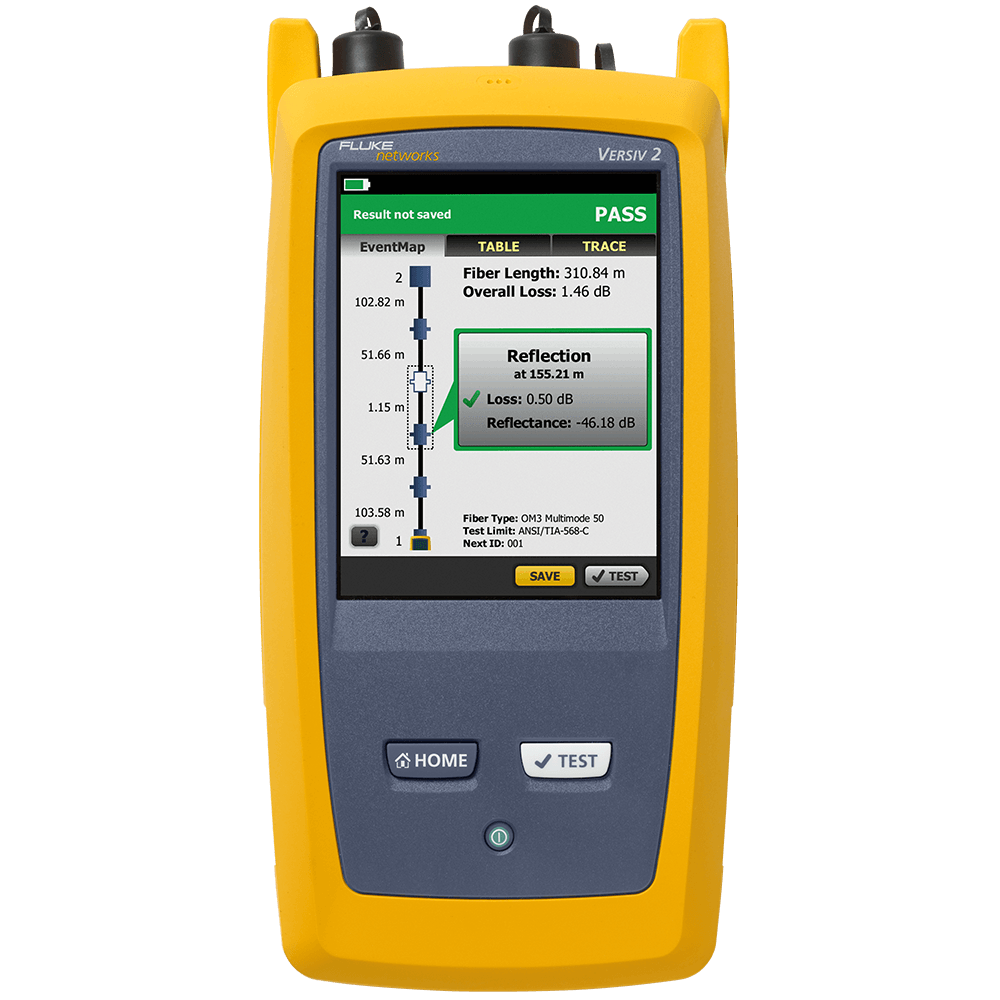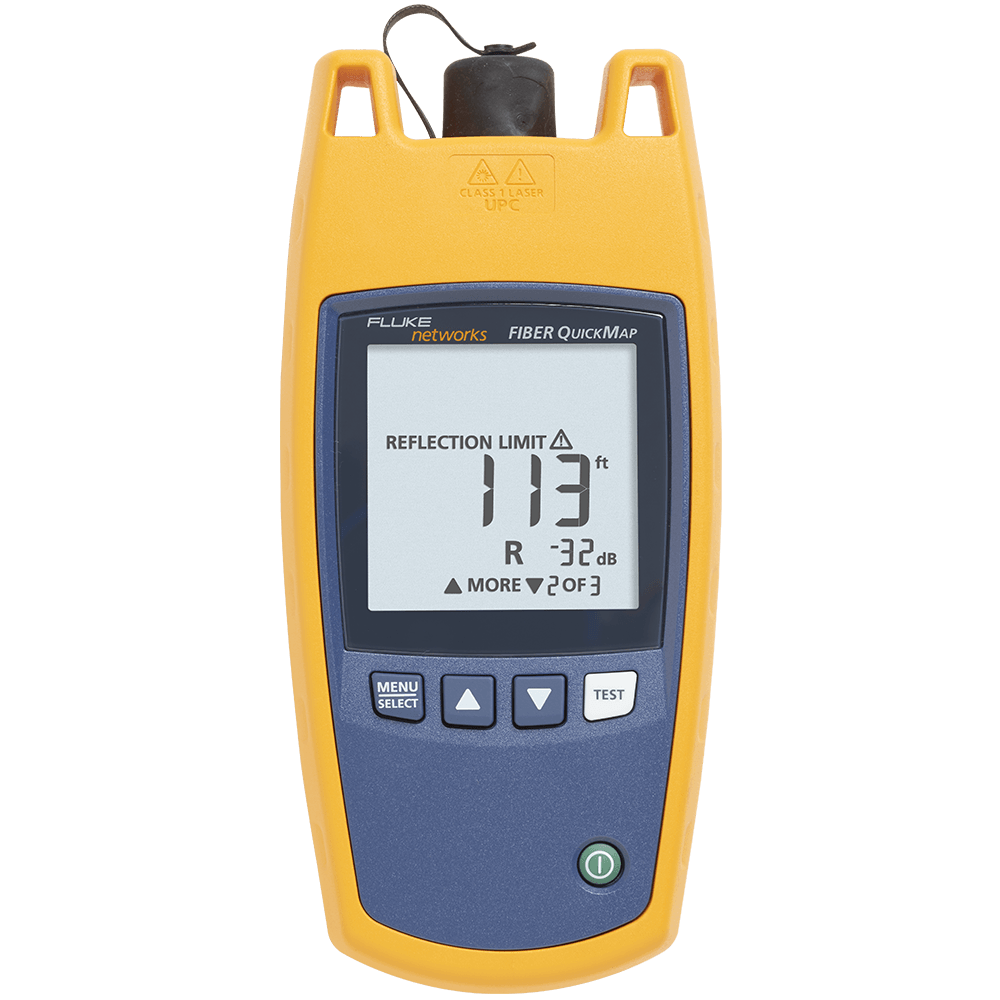Fiber OneShot™ PRO
Product Highlights
All mainframe, kit and accessory models are retired. Learn more about the next generation OptiFiber Pro OTDR
- Works on single mode fiber, 9/125µm
- 1550nm output wavelength. Compatible with standard PON wavelengths: 1310, 1490, 1550 and 1625nm
- Measure up to 75,459 feet (23,000 metres) of fiber in seconds
- Locate severe bends, high-loss splices, breaks and dirty connectors in singlemode fiber
- Measure and locate high loss connections and breaks View More >
- Locate the end of a fiber
- Find potential sources of high bit error rates caused by reflectance from dirty or poor connections
- Detects live optical signals before it begins testing
- Quick set-up. Connect your fiber and press the Test button. No lengthy set-up necessary
- Find problems quickly. Six-second test time—no more blind troubleshooting that can waste hours
- Change the Index of Refraction (IOR) to improve fiber length accuracy
- Visible in dark areas. Backlighted display turns off automatically
- Removable SC adapter is easily cleaned
- Optional LC, ST and FT interchangeable adapters are available
- Long battery life, 1,500 tests (typical) from 2 AA alkaline batteries
- Rugged construction; vibration and drop tested to 1 meter
PRODUCT NAVIGATION
Overview
VFLs work well for exposed lengths of fiber near a patch panel by illuminating bad connections and breaks. They are not very helpful for cable runs more than a few meters, or when the cable not visible or accessible, or when the laser light can’t penetrate the jacket.
Optical Time Domain Reflectometers (OTDR) provides graphical data and analysis along the entire length of a cable, way beyond the reach of a VFL, but they can be expensive and require more time to and skill to operate.
Fiber OneShot PRO in fiber optic tool kit fills the gap between a VFL and an OTDR. These optical inspection system have the simplicity of a VFL, and provide distance and power information on high losses, breaks, and the end of the fiber. They also identify live fiber.
Specifications
Specifications are typical
Dimensions
17.5 cm H
7.8 cm W
3.8 cm D
.35 kg weight including batteries
Operating temperature with the battery
0ºC to 50ºC
Non-operating temperature
-20ºC to 60ºC
Operating relative humidity
(without condensation)
95% (10ºC to 35ºC)
75% (35ºC to 40ºC)
uncontrolled < 10ºC
Vibration
Random, 5 Hz to 500 Hz, MIL-PRF- 28800F CLASS 2
Shock
Altitude
1-metre drop test
9,842 feet/3000 metres
EMC
EN 61326-1:2004
Battery type
2 AA alkaline batteries (no battery charger)
Battery life
More than 1500 tests (typical)
Laser safety
Class 1 CDRH
Complies to EN 60825-2
LCD type
Backlit black and white (segments)
Index of refraction range
1.45 to 1.5 (factory default is 1.468)
Auto turnoff
Automatically turns off after 5 minutes if no keys are pressed.
Backlight turns off first.
Factory calibration interval
None
Output wavelengths
1550nm ± 20nm at 25ºC
Laser classification
Class 1 CDRH Complies to EN 60825-2
Maximum distance
75,459 feet or more than 23,000 metres
Maximum number of incidents shown
9
Distance accuracy
± (1 m + 1% x length) for reflective incidents1 ± (3 m + 1% x length) for non-reflective incidents2
Testing speed
5 seconds typical testing time
Connector
Removable/cleanable SC adapter, UPC polish
Fiber types tested
9/125μm singlemode
Detection of reflective incidents3
-45 dB default threshold (user-selectable: -24 dB to -62 dB in 1 dB increments)
Maximum reflectance measurement
-24 dB
Detection of loss incidents4
1.5 dB default threshold
Bulkhead quality
If no fiber is attached or if the connector is dirty, the troubleshooter displays 0 m or 0 ft.
Live fiber detection
Detects optical signals from 1250nm to 1625nm and shows ACTIVE LINE if a signal is there.
Looks for a signal every 3 seconds after the first detection. +7 dB maximum input power.

Conforms to relevant European Union directives

Conforms to relevant Australian standards

Listed by the Canadian Standards Association CSA C22.2 No. 61010.1.04

Conforms to FCC Rules, Part A, Class A
1 ± user-configurable Index of Refraction (IOR) error ± the incident location error.
2 ± user-configurable Index of Refraction (IOR) error ± the incident location error.
3 Detects the location of an incident that has a reflectance larger than -62 dB. Detects incidents >2 m after the bulkhead connector when the bulkhead reflectance is <35 dB. Detects incidents >3 m after an incident when the incident reflectance is <35 dB.
4 Detects incidents >10 m after the bulkhead connector or any prior incident when the bulkhead reflectance is <-35 dB and the reflectance of any prior incident is <-35 dB. The maximum link loss prior to the incident is <7 dB.
Request your 4” x 6”, sturdy pocket guide that is ideal to take on all your fiber jobs. Includes a quick-action summary and checklist, this guide is an invaluable tool to ensure you never miss a critical step during your fiber testing or troubleshooting.

